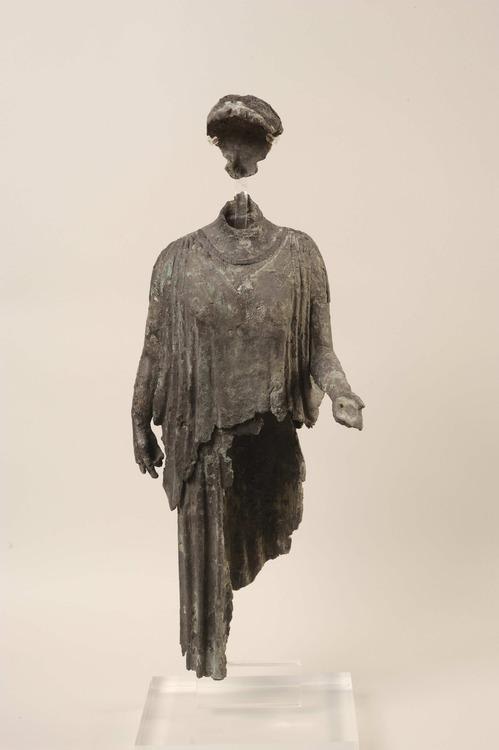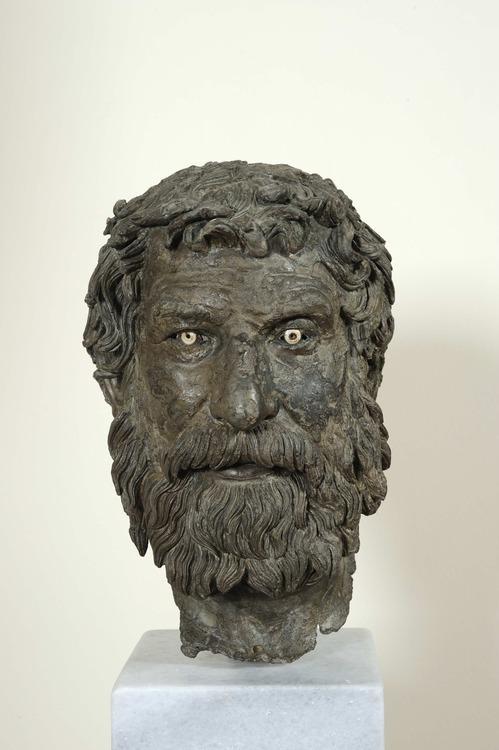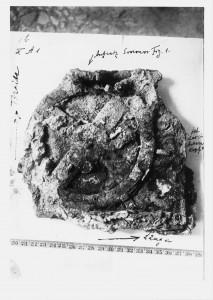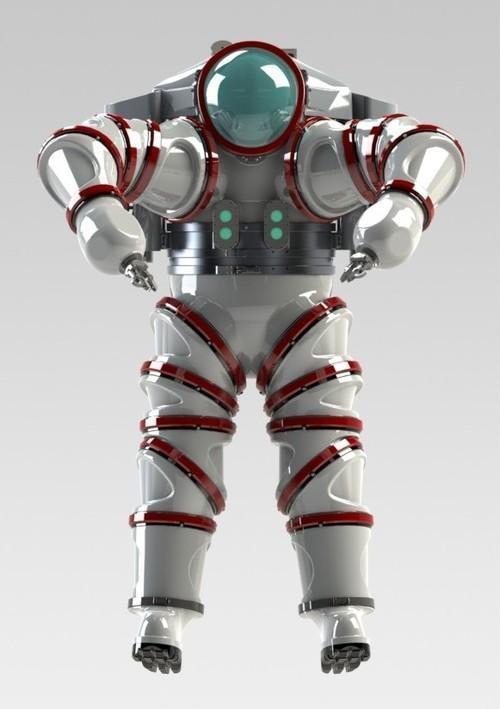By Alyssa Bereznak | Yahoo Tech – Sun, 21 Sep, 2014
Sometime in the early first century B.C., a ship went down in the Mediterranean Sea, just off a Greek island named Antikythera. The wreck itself wasn’t unusual. The island was surrounded by jagged rocks, which likely caused many a boat to disappear back then. But there was something different about this one. The boat contained a trove of statues, jewelry, and — most notably — what some scholars believe to be the earliest computer known to man.
On Sept. 15, with the help of a technologically advanced underwater suit that makes the wearer resemble Iron Man, archaeologist Dr. Brendan Foley will lead a team to do one final excavation of the site. He hopes to find yet another ancient computer, along with details that will help historians finally identify who its owner was all those years ago — a question that may shape how we view the birth of civilized technology.
Mysteries of the Mediterranean
Discovered in 1900 by a sponge diver who spotted the glimmer of a bronze hand in the sand, the Antikythera wreck first revealed Roman Empire artifacts lie dormant at the bottom of the ocean.
“Its amazing cargo was the light that shined on the Mediterranean,” Foley said. “People thought, oh my god, if this is down there, what else is? The wreck is really the birthplace of underwater archaeology.”

Images courtesy of the National Archaeological Museum, Athens. Copyright Hellenic Ministry of Culture and Sports/Archaeological Receipts Fund. (K. Xenikakis)
The exact date and details of the Antikythera shipwreck have long been debated by historians. Initial theories first pegged Roman general Sulla, who lived from 138 B.C. to 78 B.C., as its owner. Scholars surmised that he was traveling home with a recent haul from Asia Minor to attend a big parade being thrown for Julius Caesar.
Carbon dating sank that initial thesis, placing the ship’s capsize date at around 60 B.C. Researchers have since theorized that the ship was sent to retrieve commissioned statues meant to decorate the villas of Rome’s rising upper class.
But Foley favors a more romantic situation: that the ship was transferring a woman of importance or nobility to be married in Rome, and the riches on board — including what he assumes was the very costly and prized mechanism — represented her dowry.
“We’re kind of in love with that idea,” Foley told Yahoo Tech. “It’s such a romantic notion. It makes it the Titanic of the ancient world.” (And the mechanism its Heart of the Ocean necklace, only nerdier).
His wish is buttressed by some evidence. A second excavation of the site, led by Jacques Cousteau in the 1970s, revealed what scientists believe is a female skull and jawbone near some jewelry.
But how Foley’s 10-person team approaches the excavation is dictated less by the ship’s possible origin story and more by putting together the missing pieces from past explorers — especially recovering still-missing parts of the mechanism.
Diving in
Learning how to retrieve the material at 200-foot depths proved much more difficult than the sponge divers in 1900 expected. They spent the better part of a year removing items at the site, their only real diving equipment consisting of a heavy bronze helmet. It connected to a long rubber hose that was fed air by a manual crank at the surface. The entire contraption allowed only five minutes of “bottom time” per person, requiring the excavators to rotate among 20 men at a time.
The task was grueling, but the team was well rewarded for its effort. It recovered a total of 36 marble statues and a handful of bronze ones, some of them more intact than others. Along with that came all kinds of ceramic and glass containers, lamps, human remains, and gold jewelry.

Among their findings was a mysterious rectangular bronze object covered in marine growth. It measured about 20 centimeters high and featured a circular crown gear, but immediately broke into three parts when the divers brought it ashore. They assumed it was part of a broken statue and stored it in a museum along with other fragments recovered from the wreck.
It wasn’t until 1902, when a former Greek minister of education was visiting the museum, that he noticed a few tiny inscriptions on one of these pieces of bronze and its gears. One word he recognized was “sun”; another was “Venus” or, in Greek, “Aphrodite.”

“This was the first day that the mechanism was actually discovered,” Yanis Bitsakis, who has a Ph.D. in the history of the Antikythera mechanism and who will be present at the expedition, told Yahoo Tech.
From that day, the scholars knew it was an astronomical device, but they had no idea how it functioned or what, in particular, it could tell you. To make matters more complicated, scientists eventually realized that they had only about 50 percent of the contraption to examine in the first place.
“At first they assumed it was some sort of navigational instrument,” Foley said. “Then people thought that, well, gears from first century B.C. is kind of anachronistic. Maybe it was just something that was dropped on the site much later. But slowly, with the advent of X-ray capabilities to look inside this thing, people have deciphered what it was used for.”
Periodically over the next 50 years, the discussion of what the mechanism did continued.
Physicist and science historian Derek de Solla Price was the first to carry out an extensive study on the device in the 1950s. In 1959, Scientific American ran a front-page article on his discoveries, in which he declared the object to be the first known computer — a bold and groundbreaking claim, considering that historians had previously awarded that title to certain mechanisms made in the Middle Ages, about 14 centuries later.
Historians were mystified by this device and surprised to learn that the Babylonians — who wrote down their observations of lunar and solar eclipses — were in contact with the Greeks. Even so, they couldn’t believe something so intellectually advanced had existed during that period in history.
“It was like Indiana Jones getting into a tomb and discovering a cellphone,” Bitsakis said.
In other words, it proved a certain technological intelligence at that time that even now some scholars refuse to accept.
“Still, some engineers are totally reluctant to approve the mechanism as a real computer,” Bitsakis said. “They just think it’s a hoax or it was put there intentionally after the wreck.”
De Solla Price continued his research for decades. With the help of a colleague at the Atomic Energy Commission, he was able to peer inside the object with X-rays. In 1974, he published a book analyzed the inner workings of the device titled Gears from the Greeks. After studying the X-rays, de Solla Price concluded that the device was a mechanized tool for predicting and identifying the positions of the planets in the solar system. It was set into motion using a large knob or crank. When a person turned it, the gears of the contraption moved, and those gears were attached to separate needles on the two faces of the machine. On one face, the needles pointed to the positions of the five planets known in the first century B.C.: Mercury, Venus, Mars, Jupiter, and Saturn.
On the other face, the indicator needles showed phases of the moon and predicted the possibility of lunar or solar eclipse. So if you turned it one way, it would move forward in time, and if you turned it the opposite way, you moved into the past.
“It was very skillfully crafted,” diving specialist Michael Lombardi, who plans to join Foley in his excavation, told Yahoo Tech. “The engineering that went into this even today is impressive. And this was done with hand tools. The precision of the gears that worked together were unlike any others.”
It even came with an owner’s manual, which sits on display at the National Archaeological Museum. On what was probably some sort of copper alloy, you can see a script of Greek letters — only a couple of millimeters high — that explain how the item functions. Scientists think those plates were likely attached to the wooden box that the object originally came in (but which fell apart after years underwater).
In 2005, physicist and technological historian Michael T. Wright worked with his colleague Allan George Bromley to re-create a working model.
A year later, Bitsakis and a team of researchers followed up with a slightly modified version of that, which they revealed alongside some new findings in the scientific journal Nature.
The search for more
But that’s not the entire story. While examining the many pieces of the computer that were retrieved, researchers realized that one stood out from the collection: “Fragment D.” It’s a small item, about 6 inches square and 3 inches wide, made of thin sheets of bronze that, after years of deterioration, now have the consistency of phyllo dough. Scientists soon recognized that this piece was made of a different material and workmanship, leading them — especially a hopeful Foley — to believe that there’s an entirely different device that could still be sitting at the bottom of the ocean.
“We think that the mechanism probably wasn’t alone in terms of being a very high-value luxury good,” Foley said. “We think there’s going to be a lot more stuff down there. It’s the kind of stuff that we can’t even predict. it’s the highest-value, highest-quality goods that were available in the first century B.C.”
To ensure that they make the most of their trip, Foley and his team will explore the wreckage using a new $1.3 million exosuit, which will be used for the first time when their excavation launches this week.

The journey, which Lombardi is calling their “Big Fat Greek Expedition,” will start by sending a robot down to the wreck so that it can map the site and the seafloor around it. The team will also run a metal detection survey to determine how large the site is.
It will then send divers down in the pressurized suit, which allows them to explore the bottom of the ocean for an unlimited amount of time. Traditional diving suits aren’t typically pressurized and therefore require time to “decompress” via closed circuit rebreathers and mixed gases when a diver returns to the surface. This always limited the amount of time a team could spend poking around at the bottom of the ocean. With the exosuit, those limits don’t exist.
“When we’re ready, we say over the communication, ‘OK, I’m ready to come up,’ and they pull us back up,” Foley said. “It takes three minutes to get to the surface. So it’s a huge increase in productivity and efficiency.”
The suit’s flexible tubing and metal claws will also allow researchers to move their arms and navigate the delicate debris. As they traverse the ocean floor, they’ll also use a custom-made remotely operated vehicle, which will act as a data collection station.
That being said, jamming yourself into a stuffy pod is not the most pleasant way to spend a day in the Mediterranean. To navigate the exosuit, you must prop yourself up on a makeshift bicycle seat and place your feet lightly on its foot pedals, which control the thrust of the apparatus. Foley’s team has spent the past half year training in the suit and — as a result — fallen victim to severe bruising, skinned elbows, and tender crotches.
“It’s like you’ve got your arms and legs and torso inside a stovepipe,” he said. “It’s really quite uncomfortable.”
A blank slate
Previous teams have cleared the site of its original statues and wreckage, a fact that Foley says works to his team’s advantage.
“Those big, bulky statues are out of our way, and now we’ve got this sediment blanket on the seafloor,” he told Yahoo Tech. “We’re hoping that if there is another mechanism, it’s down in the mud and it’ll be very well preserved indeed.”
With any luck, the team will find more pieces to the puzzle that explain the mechanism’s mind-boggling first century B.C. presence, or perhaps a companion machine that measures something different. Though neither Foley nor the rest of the team is sure what they’ll find, they’ll be grateful for anything that will teach them more about the surprisingly early origins of technology — something that might even result in the rewriting of history books.
“Since we will be able to survey the whole ship, and hopefully within a year or two or three have the whole cargo discovered, it will greatly help us in finding the whole context,” Bitsakis said. “It will be an even greater story.”



